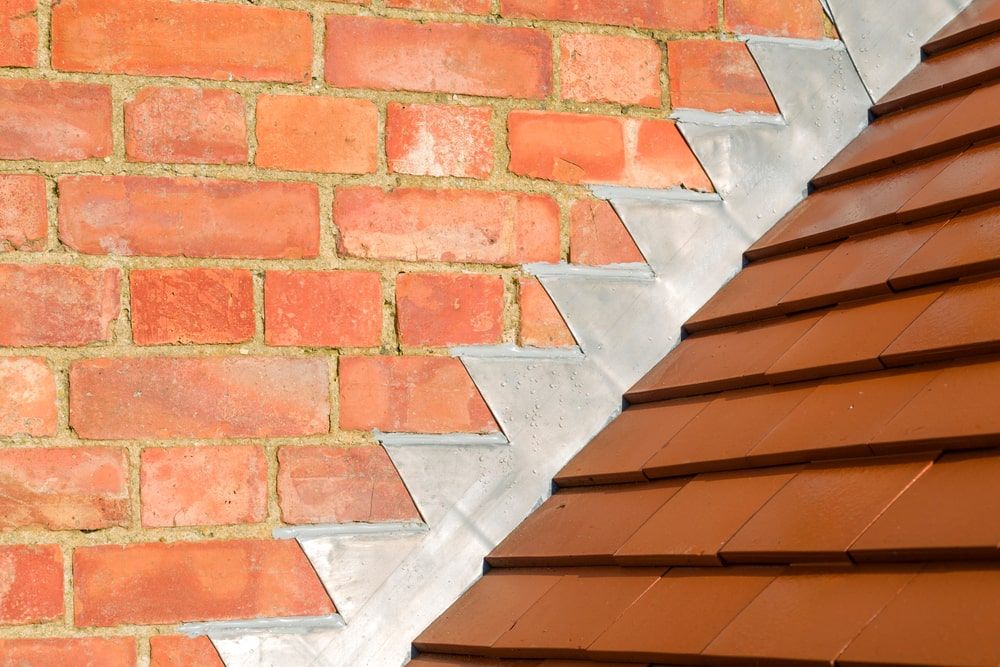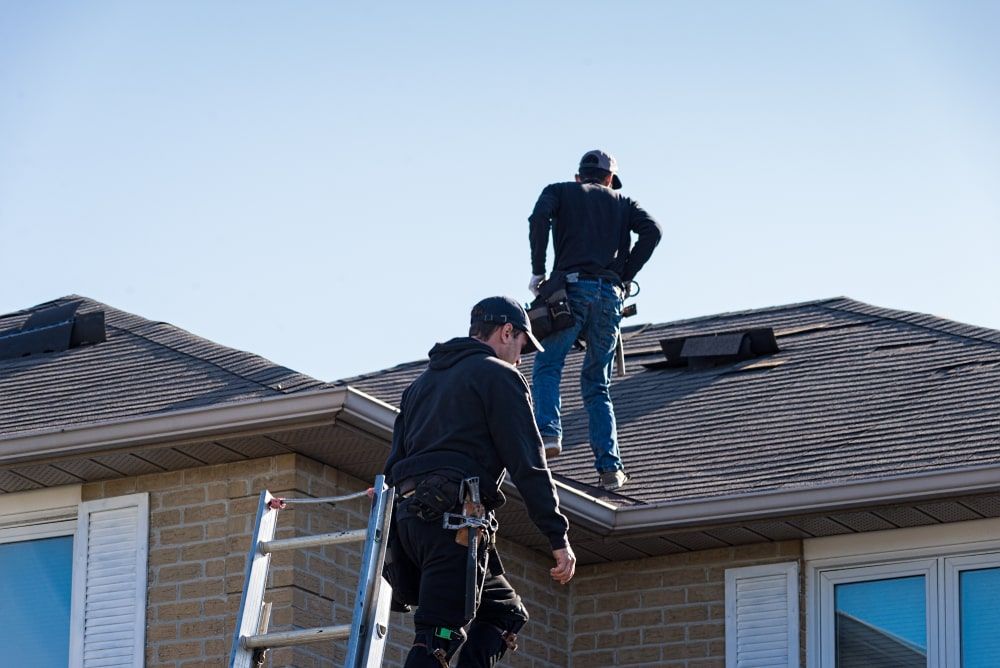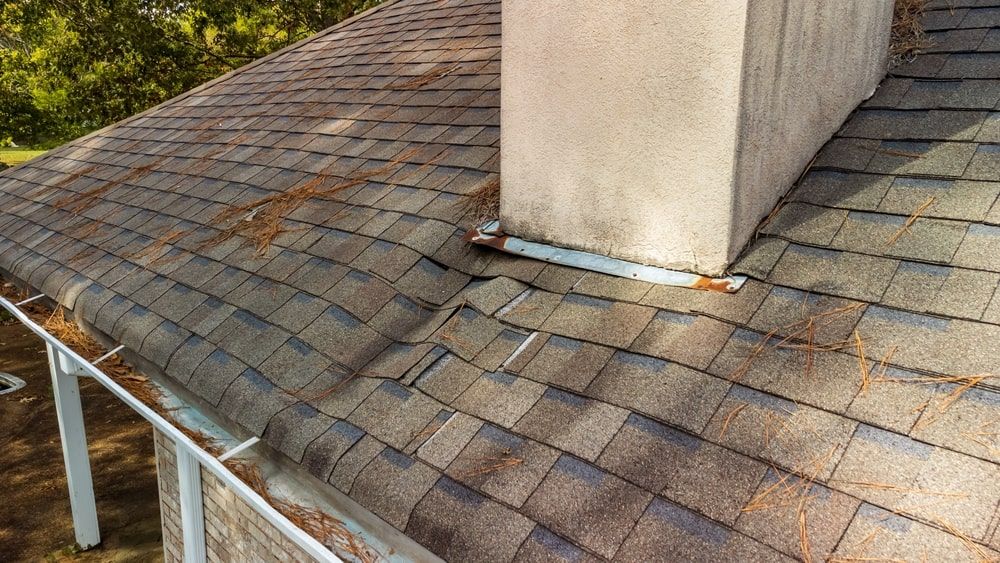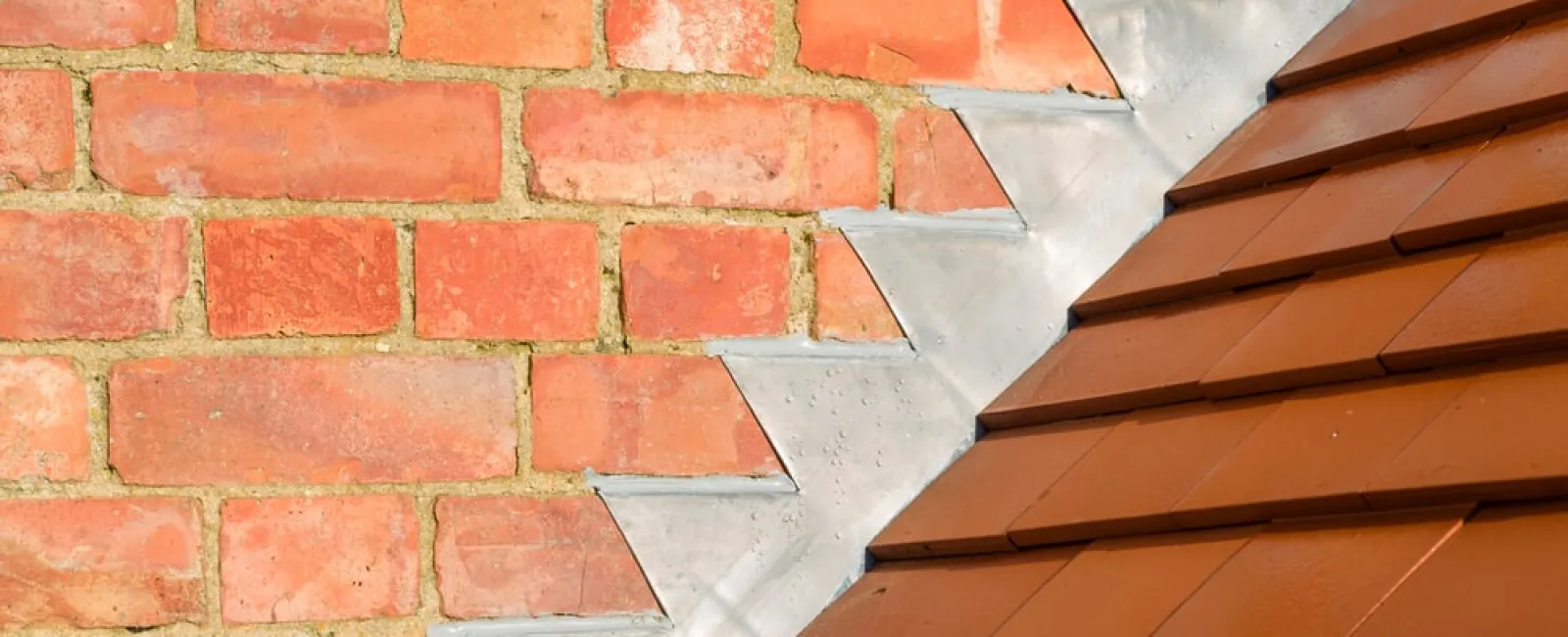Although shingles are the primary protectors of your roof, they can't completely seal joints or corners. Roof flashing may be thin and galt, but it plays a large role in keeping water from damaging your home.
What is Roof Flashing?

Roof flashing is a technique typically consisting of thin strips of waterproof material, used in roofing to prevent water leaks and protect vulnerable areas of a roof from water damage. It is usually installed where the roof meets a chimney, vent pipe, skylight, or wall. Because of the material this technique uses, it is also called metal flashing.
What is Roof Flashing Made Of?
Roof flashing materials are weather-proof. You may see numerous materials be used for flashing but it's typically a rust-resistant metal such as:
- Galvanized steel - used most often and preferred by professional roofing companies
- Aluminum-zinc coated steel marketed under the Galvalume name - offers more corrosion resistance than galvanized steel
- Aluminum - easily bent and the material of choice for DIY installation
- Copper - custom-made for copper roofs
Where Should Roof Flashing Be Installed?
Metal flashing is installed wherever there's an intersection or a termination of your roof. That means you'll see roof flashing material in the following areas:
- At vent pipes
- Along roof ridges
- In low areas (valleys) where roof pitches connect
- Around dormer walls
- Around skylights or other windows extended from the roof
For flat roofs or those without overhanging eaves or soffits, drip edge flashing may be installed to move water off the roof into a gutter system.
How to Assess Roof Flashing Damage

Since roof flashing is usually made of metal, it appears to be sturdier than shingles or tiles. It's designed to be tough. However, over time, even metal roof flashing will begin to show signs of wear and damaged flashing.
Taking time to visually check your roof after a severe weather event is important. Inspect your roof multiple times of year to ensure you catch a problem early on. While your visual inspection from ground level is a great starting point, getting a roof inspection from a professional is recommended. Their expertise ensures damage will be found, and they can provide recommendations when that is the case.
Signs of Roof Flashing Damage

- Small holes: Water needs only a little space to seep under roof shingles. Small holes in roof flashing caused by corrosion or wildlife (woodpeckers) can turn into a large problem and need to be sealed.
- Rust or corrosion: Even with galvanized coatings, roof flashing materials will corrode over time due to the reaction with air. Salt air is more corrosive than inland air. Rusted roof flashing will no longer repel water and needs to be cleaned, sealed, or replaced.
- Missing pieces: If the roof flashing loosens during storms or high winds, is not affixed properly, or is peeled back by a curious raccoon, you may notice missing pieces. The absence of the water barrier flashing is a serious concern.
- Bends, cracks, or dents: A bend or crack seems minor, but this type of damage breaks the galvanized coating on steel or weakens the structure of other metals. When the metal is compromised, it can be more susceptible to corrosion.
- Internal leaks: You may not be able to see all the roof flashing, but internal leaks near windows, fireplaces, skylights, or in your attic are another sign of damage.
- Mold or staining on fascia boards: Drip edge flashing that was improperly installed can cause this type of damage.
- Worn or damaged siding or shingles: When the metal flashing fails to rebuff water properly, you may see water damage on the siding. Shingles in low spots or near areas where roof flashing is used may show signs of water damage (darkening, bending), indicating the roof flashing material has been compromised.
You'll find numerous online sources for DIY advice about how to roof flashing repair, but this type of work is best left to the professionals. Professional roofers have the expertise to safely navigate and identify problems that need to be fixed.

